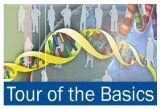 Probiotic bacteria protect endangered frogs from lethal skin diseaseLaboratory tests and field studies conducted by James Madison University (JMU) researchers continue to show promise that probiotic bacteria can be used to help amphibian populations, including the endangered yellow-legged frog, fend off lethal skin diseases.
Probiotic bacteria protect endangered frogs from lethal skin diseaseLaboratory tests and field studies conducted by James Madison University (JMU) researchers continue to show promise that probiotic bacteria can be used to help amphibian populations, including the endangered yellow-legged frog, fend off lethal skin diseases.The latest research, funded by the National Science Foundation, will be presented June 4 by undergraduate biology major Brianna Lam at the 108th General Meeting of the American Society for Microbiology in Boston. Other coauthors of the presentation are Drs. Doug Woodhams and Reid Harris from James Madison University and Vance Vredenburg from San Francisco State University (SFSU).

Mountain yellow-legged frog (Rana muscosa) in City Creek, San Bernardino County, Calif., September 13, 2005. This young frog is less than one-and-a-half inches long. Adults measure about two to three inches long. (Image Credit: U.S. Geological Survey)
Lam first conducted petri dish experiments that clearly showed the skin bacteria repelling the deadly fungus. She then tested pedobacter on live infected frogs, bathing some of them in a pedobacter solution. The frogs bathed in pedobacter solution lost less weight than those in a control group of infected frogs that were not inoculated.
In addition to the lab experiments, the JMU and SFSU researchers have studied the yellow-legged frogs in their natural habitats and discovered that some populations with the lethal skin disease survive while others go extinct.
The populations that survived had significantly higher proportions of individuals with anti-Bd bacteria. The results strongly suggest that a threshold frequency of individuals need to have anti-Bd bacteria to allow a population to persist with Bd.
"Taken together, the studies suggest that increasing the proportion of individuals with anti-Bd skin bacteria in at risk populations can halt the epidemic spread of the lethal pathogen," says Lam.
--------------------------------------------------------------------
Public release provided by American Society for Microbiology
See also:
Probiotic Bacteria Protect Endangered Frogs From Lethal Skin Disease: www.eurekalert.org/pub_releases/2008-06/asfm-pbp052908.php
Probiotic Bacteria Protect Endangered Frogs From Lethal Skin Disease www.sciencedaily.com/releases/2008/06/080604104404.htm
'Probiotics' could save frogs from extinction - life
www.newscientist.com/article.ns?id=dn11922
Biology News: Probiotics could save frogs
www.bioedonline.org/picks/news.cfm?art=3300
.jpg)
.jpg)
.jpg)

.jpg)
.jpg)
No comments:
Post a Comment